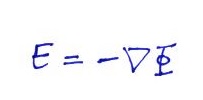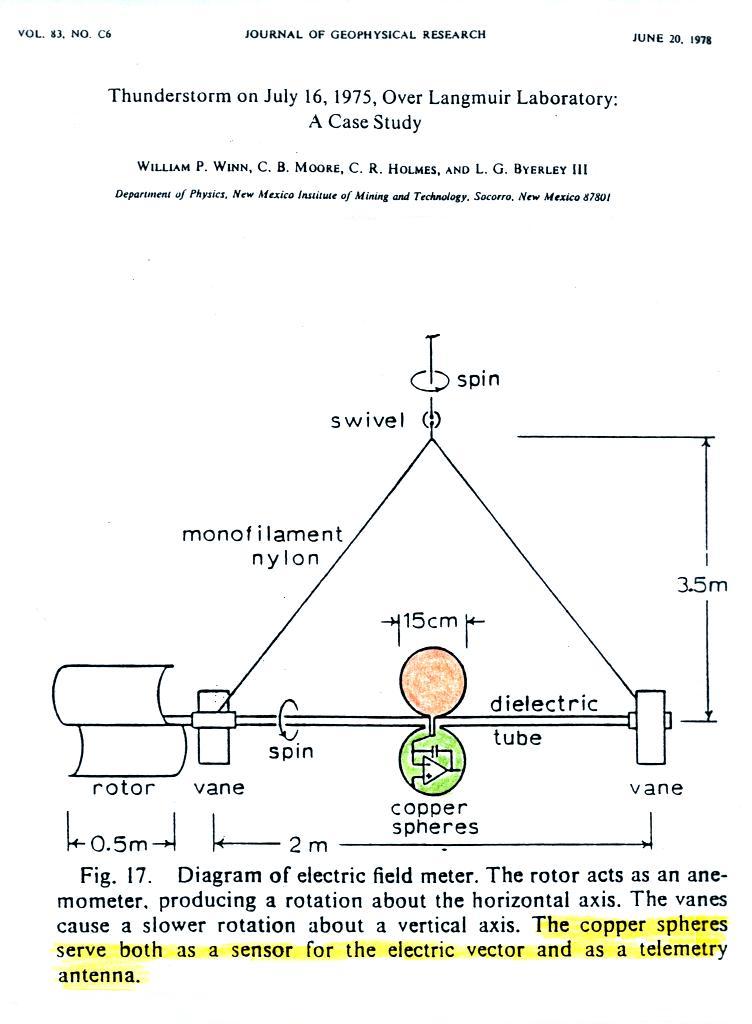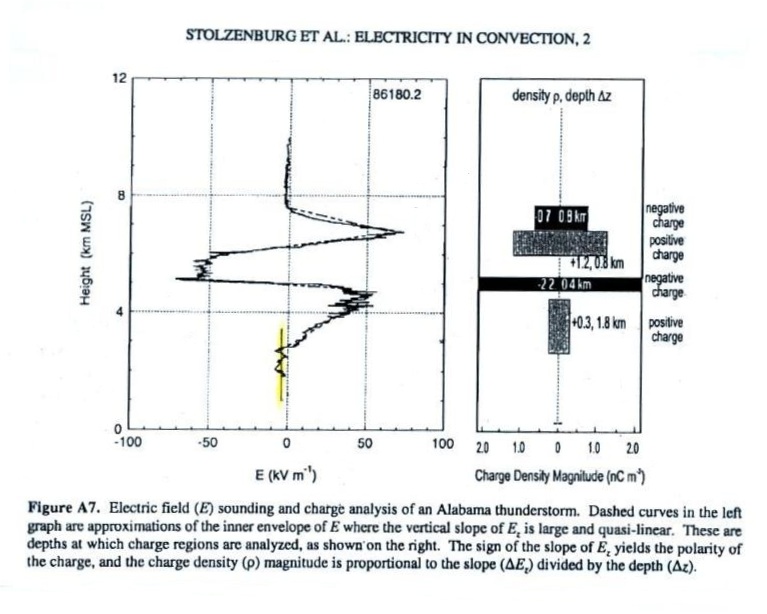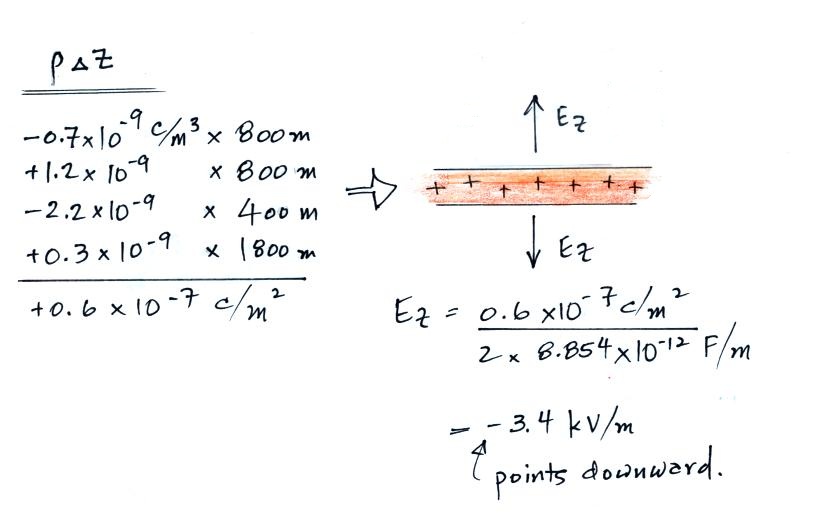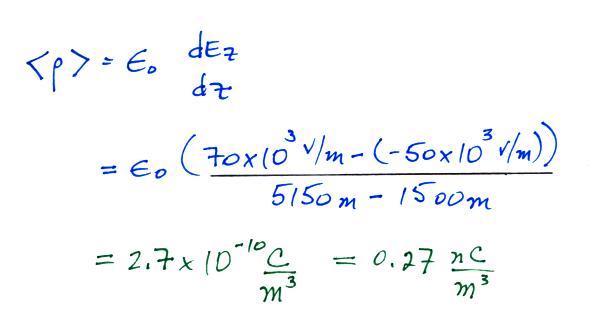






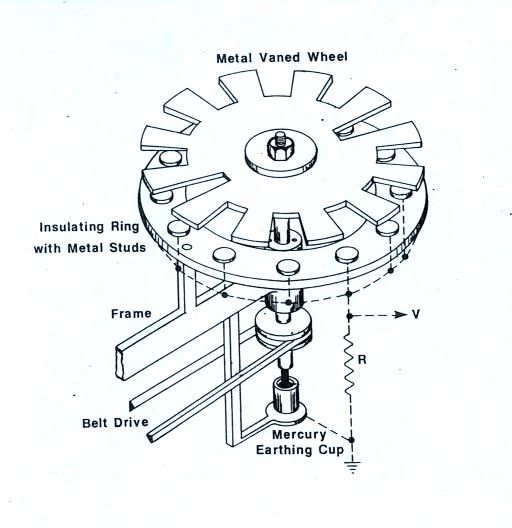 This figure appeared in
Martin A. Uman's book "The Lightning Discharge,"
Academic Press, Orlando, 1987. One
of the appendices in the book discusses
instruments used in lightning research.
|




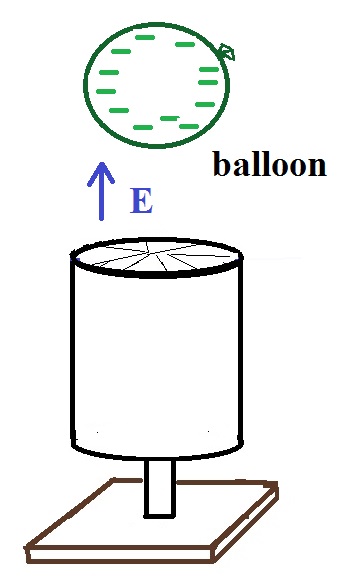 |
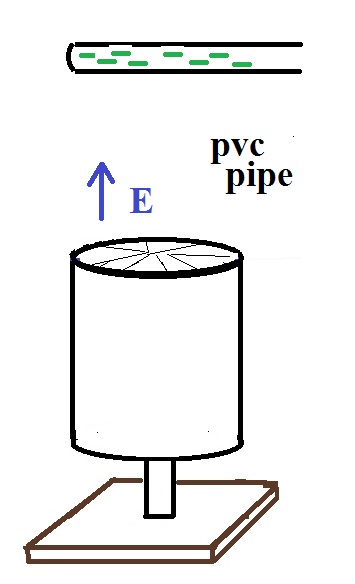 |
 |
| The field mill output
voltage saturated at -13.5 volts |
A large negative
polarity output signal from the field mill |
A large positive output
voltage was noted. |
 |
 |
| Inverted
field mill |
close up of the
field mill sensor plate |


